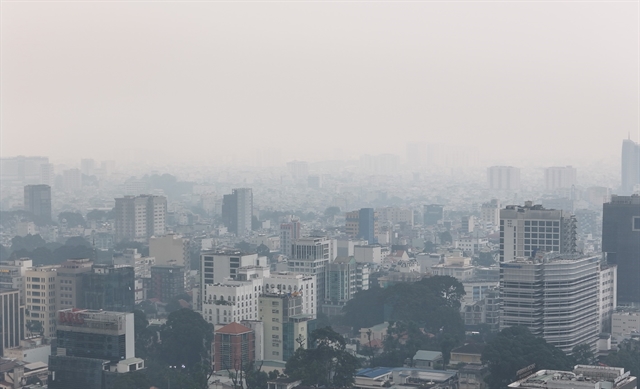 Environment
Environment

 |
| A wind power system in Quảng Trị Province. — VNA/VNS Photo |
HÀ NỘI — A study by Hà Nội University of Science and Technology, in collaboration with the Ministry of Agriculture and Environment, has found that the greenhouse gas (GHG) emission factor of Việt Nam’s national power grid in 2024 reached 0.681 tonnes of carbon dioxide equivalent (CO2e) for every megawatt-hour (MWh) of electricity produced, a 3.2 per cent increase from 2023.
Researchers attributed the rise to a 17.7 per cent surge in coal-fired electricity output, which made up 49.5 per cent of the national mix.
The increase signals a shift back toward more carbon-intensive energy, with experts warning that Việt Nam’s grid remains 'brown' by global standards. This term refers to energy systems that rely heavily on fossil fuels, especially coal, resulting in high levels of GHG emissions. By comparison, grids with a low carbon intensity, typically powered by renewables or low-emissions sources, are considered 'green'.
“The proportion of coal in the energy mix remains stubbornly high, and reducing it is proving extremely difficult,” said research team representative Phạm Ngọc Anh to Vietnamplus.vn.
Data from the past decade shows emissions peaked between 2015 and 2018, when coal-fired plants expanded rapidly.
Since 2019, the growth of renewables has brought gradual improvements, though Việt Nam’s overall emission factor is still considered high.
The study also noted that even renewable sources have a carbon footprint when assessed over their full life cycle.
For example, solar power can emit as little as 13 tonnes of CO2e per gigawatt-hour (GWh), but in some cases, depending on manufacturing and disposal processes, emissions may reach 731 tonnes of CO2e/GWh, on par with oil-fired power.
The research group proposed that the national grid’s emission factor be released in the first quarter of each subsequent year. This would allow entities and businesses to access the most recent data for GHG accounting, enhancing the accuracy of emissions reporting. This figure not only reflects how clean the national grid is, but also serves as a basis for national GHG inventories.
They also urged authorities to set clear key performance indicators for each power plant and provide training so operators can independently calculate and report their carbon intensity.
The researchers expressed hope that under Power Development Plan VIII, Việt Nam will reduce its reliance on fossil fuels and move toward a greener grid, aligning with the nation’s net zero emissions target for 2050. — VNS




